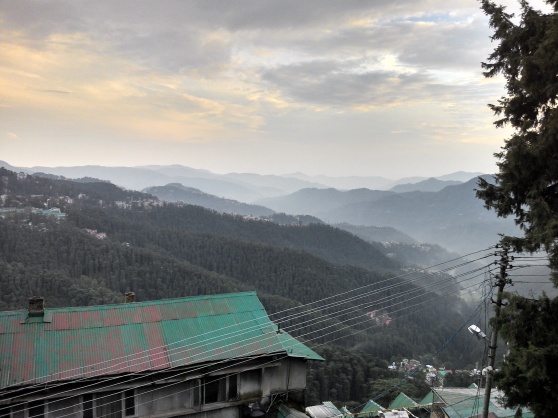It’s no understatement to say that Indian food is world renowned. Travel writing about India always dotes dreamily on the delights of the roti, paratha, idli and dosa. Every Lonely Planet is filled with gratuitous shots of steaming chai cups. I’m not meaning to bash these foods; they’re fantastic, the cream of the crop. But you probably already know about them, so I thought it might be fun to give a little attention to some of the best foods of India that will never make it into an edition of Lonely Planet.
Haldirams Moong Dhal.
Haldirams is the King of packet snacks. If you’re looking for a salty hit, look no further than these golden little globs of deep fried lentil goodness. I can’t work out why, but every other brand of packet snack just tastes like farts. It’s also the only packet snack I’ve ever eaten where you get more in the packet than you expect. Compare with Indian crisps – you might think they are a bargain at Rs. 5, but you get exactly 5 crisps in a packet. Boo.
Omlette in a bun.
Can’t stand the thought of more deep-fried street food? Never fear, heavily oiled eggs will be your saviour!
Ingredients:
One sweet brioche bun, must be out of a packet, squashed and certainly not from a bakery.
3 eggs, of questionable freshness
Lots of green chillies.
Directions:
Create an omlette as per usual. Put at least 9 green chillies into it. Take half of the brioche bun and squash it into the runny top of the omlette as it’s cooking, so that the egg congeals into the spongey centre of the bun. Flip the omlette, then press on the other bun half, so you have a spicy omelette sandwich made from sweet brioche bread.
NB: don’t try to get clever and ask for the omelette with toast. Indians cannot make toast, so just don’t ask. It could be down to impatience in the kitchen or it could be thanks to an incapable first British toast eater, but either way the damage is done and the example is set. ‘Toast’ is universally served as soggy, lukewarm bread.
Mystery crispy snacks
Imagine the situation: You are at a train station, just about to run for your 3 day train. You know the food available on the train will be slightly dodgy, so you grab as many varieties of snacks as possible. Crispy peas, tapioca sticks, cassava slices, maize spirals, farfar stars, roasted chickpeas, potato crisps, the ubiquitous ‘bombay mix’, chickpea flour noodles, peanuts, unidentified reformed things. You think you’ve got an excellent range to keep your taste buds occupied for the long journey. You are wrong. They are all vehicles for exactly the same flavour. ‘Masala’of course. Enjoy three days of slightly burnt spice mix.
Western Banana Desserts
If you are anywhere remotely touristy you have three options for dessert, all of which involve bananas. Your options are banana crepes, ‘Hello to the Queen’ or Banoffee Pie. All of them will be wrong somehow; freezer burnt, limp, soggy, cold, whatever. But somehow they will all taste like heaven.
Indian Chocolate
Less cocoa, more milk solids and sugar. Always serve cold out of the fridge or melted. Your sweet tooth is about to get totally out of control. Special Mention for Perk Bar, whose advertising reads “super-charged with glucose for an instant energy hit!”
Boost
A dhabba favourite for when you are bored of chai. This is a strange and delicious mix of horlicks and cocoa. And it’s perfectly acceptable for grown men to drink before bed.
NB. Aforementioned grown men can also opt for the special Horlicks For Men if they so wish. Others can select from the dizzying range of Mother’s Horlicks, Women’s Horlicks, Horlicks Gold, Horlicks Pro Mind, Junior Horlicks, Lite Horlicks, Vanilla, Toffee, Cardamom, Chocolate, Honey or Kesar Badaam Horlicks. Accompany with Horlicks biscuits for extra malty dunking. I guess they’re really into it.
Rose Milk
It’s not milk and it’s not got any rose in it at all. It’s the consistency of ice cream in a glass (yes, you can stand a straw up in it) and is sickly lurid pink. The taste of chemicals that are probably banned in the UK will rocket through you, eliminating all brain cells that were used to worry about the safety of unrefrigerated dairy produce. Perfect on a hot sticky day in the city.
Stir fried Idly
Chinese food has very thoroughly permeated India, even down to the little street stalls. Some genius decided to combine sweet and sour sauce with miniature idlys (steamed cakes of fermented lentil batter.) This is the equivalent of stir fried bread. Fusion food at it’s best.
Pani Puri
The thrill of this street snack is twofold. The first thrill is being able to handle the spice (just). The second is the adrenalin rush you get by eating something you know is horribly unsafe. You’re weighing up the balance between taste/bragging rights/the ‘experience’ and spending the next three days clutching your stomach and running to the bathroom. Pani puri are crispy shells of deep fried batter filled with flavoured water. Said flavoured water is the finest Indian Street Water, kept in a plastic bucket or old paint tub and spiked with Bishops Weed and lots of chillies. The aim is to cram the golf-ball sized things in your mouth in one go before the liquid explodes all down your front. If the amount of chilli in a plateful of these doesn’t give you stomach cramps, the water definitely will. And it’s completely worth it, every single time.

